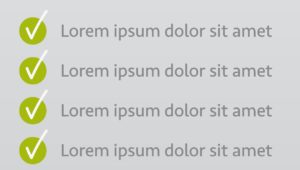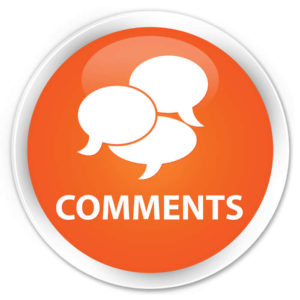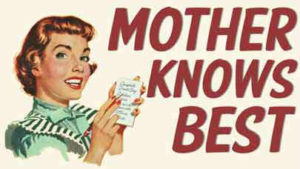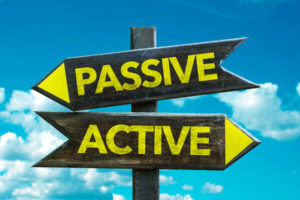Well-Written Product Descriptions Can Close the Sale
From Seinfeld to Sensational Copywriting
 You may never need an Urban Sombrero but if you did, chances are you’d remember seeing one in the J. Peterman catalog featured in a 1996 episode of Seinfeld. The fictitious fashion accessory paired the sweeping crown of a traditional sombrero with the refined brown felt of a fancy fedora or in Elaine’s words “combines the spirit of old Mexico with a little big-city panache.”
You may never need an Urban Sombrero but if you did, chances are you’d remember seeing one in the J. Peterman catalog featured in a 1996 episode of Seinfeld. The fictitious fashion accessory paired the sweeping crown of a traditional sombrero with the refined brown felt of a fancy fedora or in Elaine’s words “combines the spirit of old Mexico with a little big-city panache.”
Now that’s some valuable product placement! The point is, you want your own product to be parked permanently in your customer’s memory bank and great copywriting is the highly-engineered, precision vehicle to drive it there.
Let’s Get Emotional
 In recent years, scientific studies linking advertising and brain function have measured stimulus/response correlation, proving it is possible to get into a person’s head and plant a product in such a way that elicits an emotional reaction. These “neuromarketing” experts will be the first to tell you, this conveyance depends on the use of certain types of words and the way they are deliberately arranged.
In recent years, scientific studies linking advertising and brain function have measured stimulus/response correlation, proving it is possible to get into a person’s head and plant a product in such a way that elicits an emotional reaction. These “neuromarketing” experts will be the first to tell you, this conveyance depends on the use of certain types of words and the way they are deliberately arranged.
Just how do product description writers (real or fictitious) do it? Hold onto your sombrero because that’s about to be revealed!
People Read What They Need
 When it’s time to spend money, it’s time to spend time. People who normally skim or skip over ads will study the ecommerce product descriptions they are interested in. It’s where they do their due diligence before making an important or even an impulse purchasing decision. Short and concise is nice, but it’s okay to take as much space as needed to get all the good stuff across. Just beware: There’s an Internet slang expression TLDR– too long, didn’t read. The goal is to pack all the reasons to buy into a friendly-formatted copy presentation that discreetly answers all the objections, or reasons not to buy.
When it’s time to spend money, it’s time to spend time. People who normally skim or skip over ads will study the ecommerce product descriptions they are interested in. It’s where they do their due diligence before making an important or even an impulse purchasing decision. Short and concise is nice, but it’s okay to take as much space as needed to get all the good stuff across. Just beware: There’s an Internet slang expression TLDR– too long, didn’t read. The goal is to pack all the reasons to buy into a friendly-formatted copy presentation that discreetly answers all the objections, or reasons not to buy.
How To Determine A Customer’s Needs
 It’s easy to say good content writers should appeal to a reader’s needs. But how exactly do you identify these needs and translate that into interesting, informative ecommerce product descriptions?
It’s easy to say good content writers should appeal to a reader’s needs. But how exactly do you identify these needs and translate that into interesting, informative ecommerce product descriptions?
A good starting point is the famous Maslow’s Hierarchy of Needs. Basically the theory of motivation suggests once people satisfy their most basic needs they move up to more esoteric, intangible ones including those involving personal growth and achievement. Here are the seven ”need” categories:
- Physiological: air, food, water, shelter, warmth, sex, sleep
- Safety: protection from elements, security, order, law, stability
- Belongingness and love: intimacy, relationships (family, friends, work), trust, acceptance, affection, affiliation, feeling a part of
- Esteem: self-esteem, achievement, mastery, independence, status, prestige, earned authority, feeling of accomplishment
- Cognitive: knowledge and understanding, curiosity, exploration, search for meaning and predictability
- Aesthetic: appreciation and search for beauty, balance, harmony
- Self-actualization: achieving full potential, self-fulfillment, seeking personal growth and peak experience including creative activities
The best ecommerce marketing techniques always move people up the hierarchy to a better version of themselves.
How brands satisfy specific human demands
 What needs do the following products satisfy according to Maslow’s Hierarchy?
What needs do the following products satisfy according to Maslow’s Hierarchy?
Fiji Water: this highbrow bottled water serves the physiological yes, but could be a touch of esteem and even aesthetic thrown in there
Bengay: physiological, it’s even called a pain reliever
Nanny Cam: safety, of course, but appeals also to the cognitive need of curiosity
Viking Cruises: appeals to the higher cognitive, aesthetic and self-actualization needs
The Nature Conservancy Gift Catalog provides a good example of Maslow’s Need No. 3 “Belongingness and Love.” Identifying with a particular group or class makes people want products which demonstrate membership in that group. This approach takes more space but it can be very persuasive. The offer includes a certificate of membership, a car decal and tote with logo: all identifiers with the organization and its particular cause. The noble cause in this case helps restore the prairies, and save the bees and butterflies, sentiments that also satisfy Need No. 5.
6 Ways to Claim Your Benefits
Make a features list. With carefully crafted SEO product descriptions, it shouldn’t take anyone too long to find the selling points and key features for anything they want to buy. Some features may seem obvious, but when generating your initial list, consider the following: what is the product made of, where is it made, how is it made, how many have used it, are there quantifiable features and are size dimensions relevant.

Assign benefits to those features. The most obvious benefit for a sweater is warmth, right? Maybe if you’re L.L. Bean. But if you’re Neiman-Marcus, it’s style. And If you’re the Sundance Catalog, it’s a rugged lifestyle statement. That’s a good reminder to always consider the end user’s needs and values. Benefits are little promises you make that create a strong connection between your product and your customer’s satisfaction.
 Expand benefits to real-life problem solutions. Selling content needs to connect the dots for readers, to make the connection between feature and benefit. For example, if the wall of a gas can is 18 gauge thick (feature) it prevents evaporation (benefit). The real-life problem solution or practical application? You won’t end up along the side of the road with an empty gas can.
Expand benefits to real-life problem solutions. Selling content needs to connect the dots for readers, to make the connection between feature and benefit. For example, if the wall of a gas can is 18 gauge thick (feature) it prevents evaporation (benefit). The real-life problem solution or practical application? You won’t end up along the side of the road with an empty gas can.
An expandable suitcase is another example. It’s small (feature) so you can carry-on (benefit) and expands to bring back souvenirs (life solution). Exterior shell is hard (feature) to protect contents (benefit) and handlers can’t destroy it (life solution).
Here’s how you could apply these benefits and features to the copy:
Take to the road with a new travel buddy. Our reengineered rolling carry-on is small enough to pop in the overhead, letting you bypass the bothersome check-in line. After your trip, just pack up all your prized purchases and watch the walls expand to nearly double in volume. You’re still regulation carry-on size! If for some reason you have to check this bag, the extra-hard shell exterior stands up to the baddest baggage handlers.
Convert concerns to benefits. To overcome objections you first need to know what they are. These can often be obtained by reading discussion boards and online forums about similar products. Questions like these will pop up:
- How do I clean an expensive leather wallet?
- When should I expect to replace my new set of tires?
- Where can I find hardware for these specialized tools?
Here are some quick copy fixes that will quell these fears:
- Wipes clean with a damp cloth
- Comes with a five-year warranty
- Works with all standard size nuts and bolts
Take Your Best Shot With Bullets.  A customer should have everything they need to make a purchase including measurements, specifications, colors, care instructions, country of origin, warranty info, etc. Bullets are a great way to keep this essential data organized and easy to read:
A customer should have everything they need to make a purchase including measurements, specifications, colors, care instructions, country of origin, warranty info, etc. Bullets are a great way to keep this essential data organized and easy to read:
- Keep symmetrical, one line each, two lines each, etc.
- Begin each bullet with the same part of speech and maintain same grammatical form
- Don’t use complete sentences, bullets are fascinating fragments. If you want to write complete sentences stick to paragraphs.
 Cull From The Comments. The Home Depot does a great job of ecommerce online marketing. The feature/benefit copy for the Walk-In Bathtub is exhaustive and very technical. Yet it’s only when you scroll down through the customer comments that you learn how the product actually affects the lives of the purchasers. A comment about the warranty being voided if you self install is eye opening! Perhaps future copy would disclose this in a more prominent display position within the product presentation.
Cull From The Comments. The Home Depot does a great job of ecommerce online marketing. The feature/benefit copy for the Walk-In Bathtub is exhaustive and very technical. Yet it’s only when you scroll down through the customer comments that you learn how the product actually affects the lives of the purchasers. A comment about the warranty being voided if you self install is eye opening! Perhaps future copy would disclose this in a more prominent display position within the product presentation.
3 Ways Mom Has It Right

- “Watch Your Language”. Don’t just list features and benefits, create a mood by turning them into specific sensory details. Lush, a trendy soap boutique, demands customers experience the excitement. They choose words in each of these categories: sight (lava lamp, mesmerizing show, hypnotic spectacle of purple orbs), sound (fizz), smell (triple citrus blend), touch (skin left silky smooth). Sensory language makes soap seem like more than just another dirt-defying detergent. It becomes an experience to be cherished.
- ‘Don’t Take That Tone With Me.” In her book Nicely Said: Writing for the Web with Style and Purpose ecommerce writer Nicole Fenton devoted a whole chapter to tone. She offers advice on four key ways to let readers know you are listening:
- Show empathy in your writing
- Map your content types to your readers’ feelings
- Adapt your tone to different situations
- Be sensitive when it comes to humor
She suggests the most persuasive language comes directly from the casual discourse of a customer—a friend doesn’t say innovative or unique. So how does the average person speak? Check customer reviews on Google, Amazon or a buyer’s forum to observe discussions. Use those phrases in your copy. Be careful not to be too self-indulgent. Speak to your audience in the tone they expect. You wouldn’t use words like “funky” if you’re selling motor oil or “chic” if you’re crowing about construction boots.
- “How Many Times Do I Have To Tell You?” The answer is MANY! Repetition strengthens and confirms. The more someone hears your message, the more believable it becomes. Since the average online attention span is 10 seconds, it helps to repeat and remind people of your benefits every few sentences or about 3-5 times in a copy block. There are ways to vary phrasing to keep from sounding monotonous. Get out your Thesaurus! A skilled content writer can put the same message in the headline, introductory paragraph, subhead, bullet points and conclusion without being repetitive.
Get Active With Verbs
 One of the quickest ways to energize your product descriptions is to switch to the active voice. Consider how “The dress has zigzag trim around collar and down sides” can easily be rewritten to say “Zigzags give your figure a zap of definition from head to hem.”
One of the quickest ways to energize your product descriptions is to switch to the active voice. Consider how “The dress has zigzag trim around collar and down sides” can easily be rewritten to say “Zigzags give your figure a zap of definition from head to hem.”
Rhyme With Reason
 According to experts in Neuromarketing, statements that rhyme are more persuasive than the same statements without rhyme. Using the rhyming effect makes slogans easier to remember and ideas easier to digest. It’s been sited, “If the glove doesn’t fit, you must acquit” as the greatest rhyme in recent history. We attempted a few of our own. “How to Think Like a Client and Be Code Compliant.” Hmmmm. What about “How to Write With Sizzle So Ads Don’t Fizzle.” Uh, maybe not. So here’s the first tip…just because it rhymes doesn’t earn it a Walt Whitman award. For help coming up with some rhyming phrases that don’t bomb, check out rhymer.com
According to experts in Neuromarketing, statements that rhyme are more persuasive than the same statements without rhyme. Using the rhyming effect makes slogans easier to remember and ideas easier to digest. It’s been sited, “If the glove doesn’t fit, you must acquit” as the greatest rhyme in recent history. We attempted a few of our own. “How to Think Like a Client and Be Code Compliant.” Hmmmm. What about “How to Write With Sizzle So Ads Don’t Fizzle.” Uh, maybe not. So here’s the first tip…just because it rhymes doesn’t earn it a Walt Whitman award. For help coming up with some rhyming phrases that don’t bomb, check out rhymer.com
Tell A Mini Story
 “Once upon a time there was a rotary nose hair trimmer…” gripping huh? No pun intended. “It went in the shower and even lit up to trim during a New York City blackout.” Sounds ludicrous? This brainstorming might be better performed after a glass of wine (or three), but there is some merit to the madness. This is the real way to think outside the box when constructing ecommerce marketing solutions. You may come up with a unique situation that customers can identify with or present a benefit nobody else thought of.
“Once upon a time there was a rotary nose hair trimmer…” gripping huh? No pun intended. “It went in the shower and even lit up to trim during a New York City blackout.” Sounds ludicrous? This brainstorming might be better performed after a glass of wine (or three), but there is some merit to the madness. This is the real way to think outside the box when constructing ecommerce marketing solutions. You may come up with a unique situation that customers can identify with or present a benefit nobody else thought of.
Brainstorm a Theme
 Think of the product description not so much as cataloging one thing in a vast inventory, but rather in terms of a full-blown marketing campaign. Start by free-associating everything that comes to mind about the product. Don’t censor. Any idea is fair game. If you’re visualizing your company’s home remodeling service and the idea of your grandmother’s avocado refrigerator comes to mind, write it down.
Think of the product description not so much as cataloging one thing in a vast inventory, but rather in terms of a full-blown marketing campaign. Start by free-associating everything that comes to mind about the product. Don’t censor. Any idea is fair game. If you’re visualizing your company’s home remodeling service and the idea of your grandmother’s avocado refrigerator comes to mind, write it down.
Once you’ve drained your brain, walk away. Take a break. Come back to the list when you’re feeling refreshed. Review what you wrote. Has a theme emerged? Do you focus on the durability of an item? The classic appeal of it? The technology? See if something jumps off the page at you and try to run with it.
Decide the primary emotion you want to invoke when potential buyers think about your product. Look for words that elicit those feelings. Write a description that incorporates these words to show potential customers how their life will be improved. Then stand back and watch your product take off like an Urban Sombrero!
Need eCommerce Marketing Services?
iwebcontent has expert product description writers on staff who can take your goods and services to the next level. To learn more about product description packages and pricing, visit our website.






